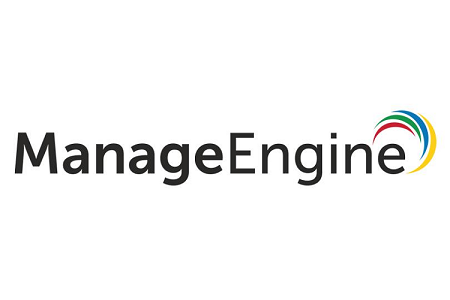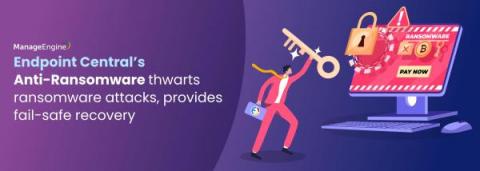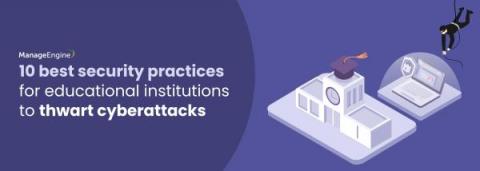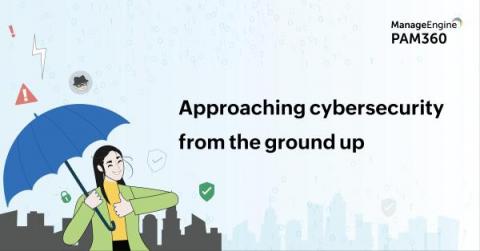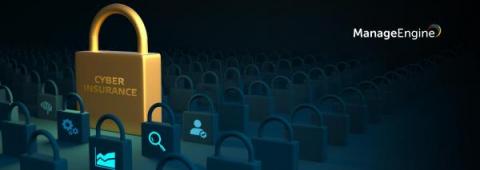Security | Threat Detection | Cyberattacks | DevSecOps | Compliance
Latest Posts
CISA publishes SCuBA's security configuration baseline tool for Microsoft 365
It is a no brainer that cloud adoption has surged exponentially in the last couple of years. The rise of digitization and DevOps combined with the aftermath of the pandemic has made cloud computing a critical ingredient for any organization’s growth. Gartner® predicts that by 2025, more than 95% of digital workloads will be deployed on cloud-native platforms.
Bid goodbye to ransomware attacks with Endpoint Central's Anti-Ransomware
Ransomware is an alarming cyberthreat that’s been evolving over the decades. According to Statista, there were a total of 236.1 million ransomware attacks worldwide during the first half of 2022. When organizations do not pay attention to their company’s cybersecurity structure, attackers instigate ransomware attacks by encrypting confidential files and folders, and ultimately demanding ransom. The ransom varies according to the type of ransomware variants.
The remote IT workforce boom and ways to face it
A fatal retweet: How the newest attack on Twitter can teach us a lesson on cybersecurity
In what may be the largest Twitter data breach attack to date, the personal data of over 400 million users was stolen from the social media giant’s grasp and put up for sale on the dark net on the day after Christmas. This attack couldn’t have happened at a worse time for the company, as the Irish Data Protection Commission (DPC) has announced an investigation into an earlier Twitter data leak in November 2022 that had affected over 5.4 million users.
The impact of cyber fouling and how scavengers might capitalize on it
The cyber landscape is ever-evolving. Organizations have started moving their resources to the cloud excessively to scale up their deliverables. The hybrid work culture and BYOD policies have made an organization’s network increasingly perimeter-less. With organizations adopting different policies to increase operational efficiency, SOCs scramble to ensure security in the network. As for attackers who are opportunists by nature, the hybrid work model introduces a lot of opportunities.
Are educational institutions easy victims of ransomware groups?
Ransomware’s new favorite victim is educational institutions. Ransomware attacks, that exploit targets utilizing malicious software code, have increased tremendously over the past few years. In addition to targeting business sectors, cybercriminals are now attempting to ambush the security posture of educational sectors. Educational institutions are an easy prey for ransomware attackers as they lack the fundamental elements of a secured network.
Year in review: ManageEngine Log360's analyst recognition from 2022
Cyberattacks have intensified over the last few years as threat actors are always improvising their game plan to carry out new and sophisticated methods. Concepts like Ransomware as a Service have made it easy for small threat groups to leverage weaponized services with devastating results for organizations. This highlights how traditional security systems and approaches are no longer able to keep up with the ever-evolving threat landscape.
Building a resilient IT infrastructure: Where do enterprises start?
The shift towards hybrid work models has expanded the perimeters of work, adding to the burden on IT teams as they fight to stay resilient in the face of increased attack surfaces. All it takes for an invasion into an enterprise’s IT infrastructure is one compromised identity. So, what are enterprise identities? These are the user names, passwords, networks, endpoints, applications, etc., that act as gateways to business-sensitive information.
Five worthy reads: Understanding cyber insurance and why it is important for your business
Five worthy reads is a regular column on five noteworthy items we’ve discovered while researching trending and timeless topics. This week we are exploring cyber insurance, how it can help businesses in the event of a cyberattack, and why it is necessary for your organization.



